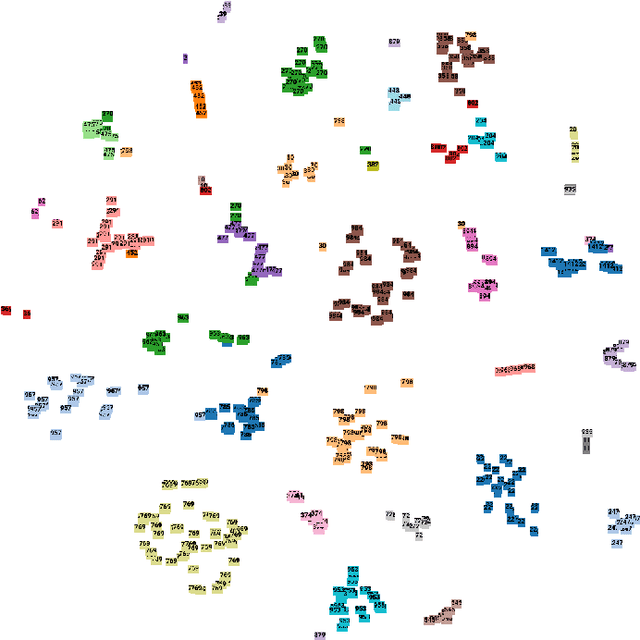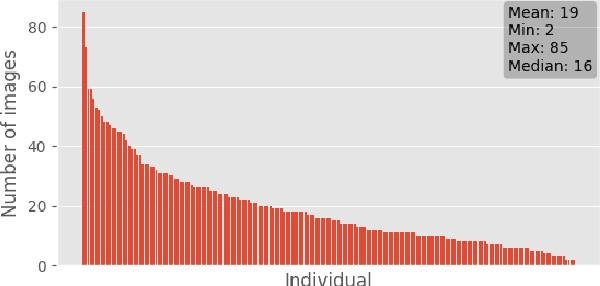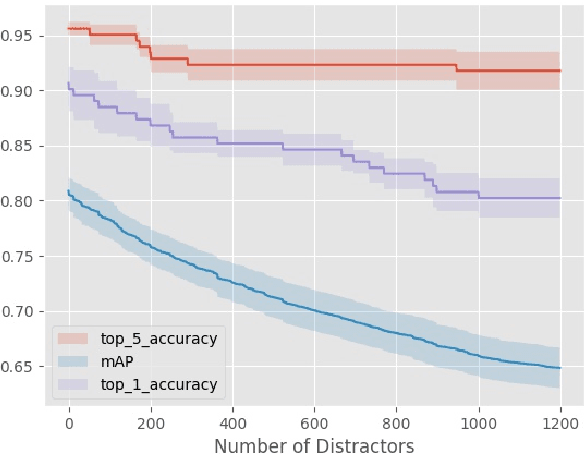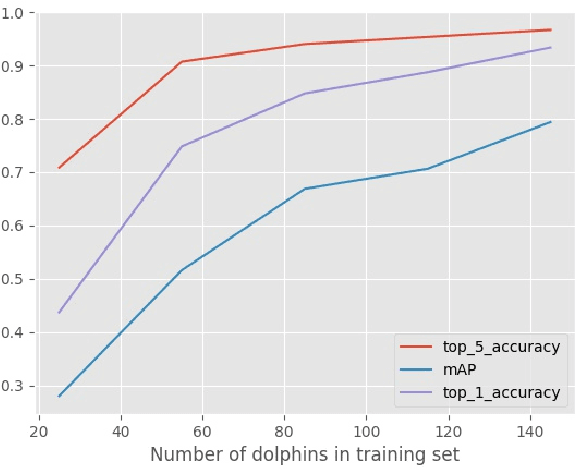Soren Bouma
Individual common dolphin identification via metric embedding learning
Jan 09, 2019



Abstract:Photo-identification (photo-id) of dolphin individuals is a commonly used technique in ecological sciences to monitor state and health of individuals, as well as to study the social structure and distribution of a population. Traditional photo-id involves a laborious manual process of matching each dolphin fin photograph captured in the field to a catalogue of known individuals. We examine this problem in the context of open-set recognition and utilise a triplet loss function to learn a compact representation of fin images in a Euclidean embedding, where the Euclidean distance metric represents fin similarity. We show that this compact representation can be successfully learnt from a fairly small (in deep learning context) training set and still generalise well to out-of-sample identities (completely new dolphin individuals), with top-1 and top-5 test set (37 individuals) accuracy of $90.5\pm2$ and $93.6\pm1$ percent. In the presence of 1200 distractors, top-1 accuracy dropped by $12\%$; however, top-5 accuracy saw only a $2.8\%$ drop
 Add to Chrome
Add to Chrome Add to Firefox
Add to Firefox Add to Edge
Add to Edge